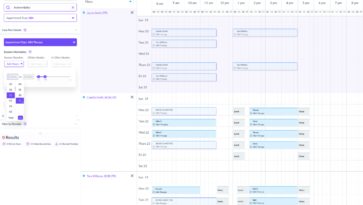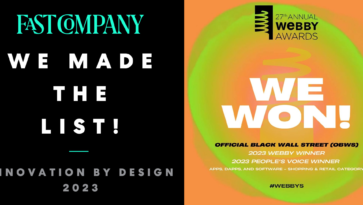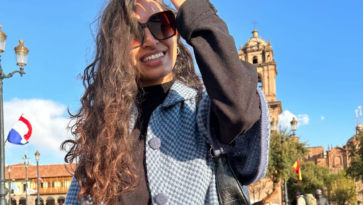With weekends one and two of Coachella 2017 now in the history books, music festival season has officially begun. These multi-day experiences have seen incredible growth over the last decade, in large part due to millennials’ preference to spend their hard earned money on experiences over things. Billboard estimates that 32 million people attend at least one event in the US each year. About half of these attendees are millennials who you can bet are relying heavily on their smartphones to navigate the festival. According to a study by Harris Interactive, 31% of millennials report using their phones for more than half of the festival, with only 15% saying they never touch it while they’re there.
Tech’s Penetration
Concert organizers, promoters and event-focused tech companies have taken advantage of the parallel trends of increasing attendance at events and the proliferation of mobile technology to introduce new ways to measure and monetize their audience. Nearly every festival in 2017 will have an official app for attendees to view lineups, personalize their schedules, access maps and more. With more than half of all attendees at larger (100K+ attendees) festivals downloading these apps, there’s a massive opportunity for a big data play and several innovators in the space, like Aloompa, are already taking advantage. Organizers are using different forms of technology to collect valuable data from their attendees and that data can be used to improve the fan experience and make data driven decisions for future events.
How It Works
The App
The primary method for data collection is the official festival app. Instead of trying to hang onto a piece of paper during the festival or remember specific set times and stages, users are encouraged to download the app as a free supplement to their visit. The core feature set of a standard festival app allows users to browse the schedule and select their favorite artists to create a personalized lineup and view a map of the grounds. In some cases, festival apps let users build playlists through a streaming service integration, look up places to eat and drink, and interact with other users on social networks. Some even have VR/AR features, such as the official Coachella app which included a Google Cardboard viewer in the ticket box that was sent out in 2016. When attendees use these features, especially the schedule builder, the app collects granular data on user actions.
Beacons
When a user downloads the app and enables the right permissions, they open themselves up to the ability to interacting with Bluetooth Low Energy (BLE) beacons placed strategically around the festival grounds. Beacons can connect to the apps to collect very accurate data on the movement of people around the festival including how many people were at any one show. Beacons can also be used to push out micro-targeted push notifications to users in a specific area to announce a promotion. The Coachella app lets users link their Spotify accounts to build a playlist based on artists they visited through remembering the beacons they interacted with to remember their time at the event.
RFID Wristbands
Wristbands have been a near ubiquitous replacement for tickets and have been for years at all major festivals. They help expedite the check in process by removing the need for a human to scan each person that walks in. Often users are encouraged to connect the wristband to the app, and then to their Facebook account, which allows organizers to build a detailed profile of an attendee, their musical tastes, and their journey through the festival. A more recent innovation adds cashless payments to the RFID chips, which increases revenue by making it even easier to buy that $10 beer without feeling the sting of taking cash out of your wallet.
The Impact
Clearly oodles of data are being collected about us at music festivals, and unless you cut off your wristband after being let in (never a good idea), it’s pretty much impossible to avoid it. So the questions are: how are festivals using this information, and is this a good thing for the attendee?
The most important data points for organizers are collected from the app schedule builder and beacons. When people build their schedule in the app it indicates which artists are most popular and who people are most excited to see. Some apps even implement a leaderboard showing the most added artists. While the schedule builder shows who people intend to see, data collected from a combination of beacons and geofenced areas show which artists fans actually went to see, and can even show how much time they spent at a show. The analytics can also be used to see the journey a fan takes throughout the festival to build a profile of what artists a certain visitor sees.
This data helps inform future events to make booking and scheduling decisions. Organizers can see which artists a single user might want to see to avoid scheduling conflicts and which might be okay to overlap on separate stages. They can make more data driven decisions on how much to pay artists, as a band that’s valuable in a solo concert might be less popular in a festival environment. These data points can provide a different perspective on festival habits than from traditional metrics like album sales, song streams, social chatter, or even concert attendance.
Although this data is largely being collected without attendees fully understanding the scope of it, it can be argued that all sides benefit. All data is anonymized and deidentified before the tech vendor provides statistics to organizers, and user data is not being sold to third parties for invasive marketing tactics. The primary goal of the data collection is to enhance the festival experience for the fan, even if someone is making money off of it on the side.
Conclusion
As music festivals grow in popularity, there’s no doubt that tech will continue to have a large impact. From an augmented reality experience on the box the tickets are sent in to drone acrobatics during shows to Doppler Labs augmented reality hearing devices, festivals provide the perfect playground for emerging tech companies to try out new ideas with a young and tech savvy audience that is open to giving most anything a shot.
—
This article can also be found on Medium








